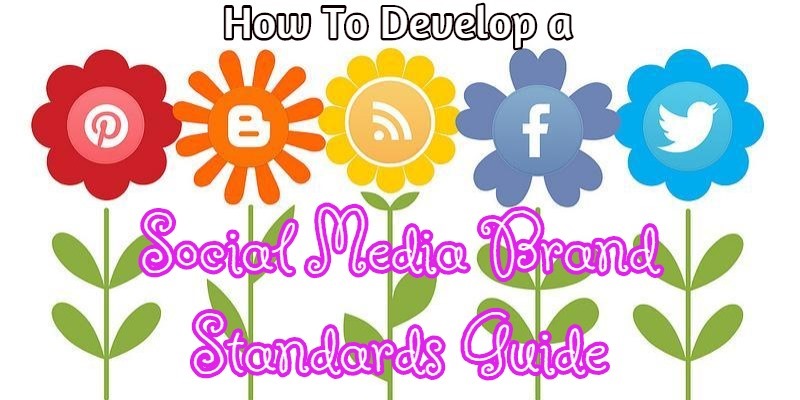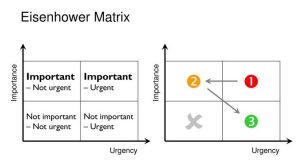
Any organization, no matter what its size or type, can benefit from having a brand standards guide, especially when it comes to social media.
Sure, it may sound like the sort of thing that only the “big guys” have, but when it comes to keeping your customer experience (and brand) feeling seamless, this is one of the best tools to have at hand.
Brian Solis describes it best: “Anyone who has ever worked in corporate marketing, advertising, and branding is more than familiar with a brand style guide. It’s how we ensured that the brand was represented as intended through marketing aesthetics and messaging – including detailed usage instructions on font, style, color, language, placement, positioning, etc.”
Sounds great, right? You know you need something like this for your social media presence so that your staff (and freelancers/volunteers/friends/Aunt Mildred) know what’s expected of them to keep your brand intact.
You want every customer who tweets, shares, likes, or follows you gets a great experience. Having that standards guide to refer to – and guide your efforts – will make it all that much easier. Plus, it’s easier to avoid social media #fails when you’ve got some rules on the books.
But what do you do if you’re a solo flyer without a marketing team? How can you create a brand standards guide for social media when you don’t even know where to begin?
To simplify this task and make it a bit more digestible (I’m talking to you, one-woman bands!), I’ve broken it out into several sections. Work through each and you’ll have the tools to make your guide.
Let’s get started.
What’s Your Style?
Every brand standard guide is about style.
Is your business the type who swigs martinis at cocktail parties while chatting up the room? Is it the coach motivating your clients to achieve their full potential? The magician, fixing problems effortlessly while leaving your customers dazzled?
If you’re looking to get started on the surface, think about how your brand might look and behave at a cocktail party. That rule of thumb is a great place for those of us who aren’t 100% business-minded to start thinking about how to build a social media persona.
If you’re ready to dig into the nitty gritty of figuring out what you want to be as a brand and a business, I highly recommend these resources:
- Finding Your Brand’s Voice (Distilled)
- The Brand Reflection Cycle in The Social Media Style Guide (Brian Solis)
- How to Create Your Brand & Find Your Voice (Marie Forleo)
- How to Find or Create Your Brand Personality (Design Shack)
- The Brand Chemistry Quiz (Hey Shenee – who also has a blog full of resources to help you narrow down your brand)
Know Your Goals
Goal setting is an important part of any venture, so naturally they fit here. There are three types of goals you should be thinking about when developing your guide:
- What do you want social media to do for your brand?
- How do you want to be perceived on social media?
- What are the goals of your business and how do they marry with your social media strategies?
If you have the answers to these three questions, you’re further along than you’d think.
Document these goals, how they’ll be measured, and start outlining objectives to get there. If you’re not sure what you should be measuring in social media (or how to measure), check out these helpful hints:
- Measuring Social Media Success (Forbes)
- 3 Simple Ways to Measure Your Social Media Results (Social Media Examiner)
- Measuring the ROI of Social Media (Solid Cactus)
- Setting Social Media Goals to Move Your Marketing Forward (Buffer)
- Set Measurable Goals for Your Social Media Marketing (Unbounce)
The importance of the goals you set will be that they will guide the content you create and keep the rest of your style decisions in focus.
If you add in instructions for your team in your guide to do something a certain way, you need to be sure that it aligns with the goals you’ve set – and that you can connect that instruction or decision on how to do something to it.
This not only makes it easier for your team to understand why they are doing what they are doing, but it also ensures that you’re keeping your eye on the prize (instead of making decisions based on trend or speculation).
Understand Your Channels
Etiquette and strategy will differ in social channels. What might work on Twitter might not fly on Instagram, and so forth. So, the next thing you need to do is really get to know those networks.
Start by doing some listening. See what others are doing successfully on those networks and identify the strategies that you like (and the ones you don’t).
- Follow influencers in your industry to see what interests them (and the rest of your audience)
- Pay attention to hashtags, language, and interactions (and think about how you can apply it)
- If you have accounts, start interacting more, but record the results (and start to test new approaches)
- Find the networks that your audience uses most (and think about how you can use them too)
Also, get to know the channels intimately by using them. It’s easier to write a social media brand standards guide when you actually know the platforms you’ll be working with. Practice, get to know them, and understand their quirks.
Another thing to keep in mind with understanding channels is to remember that you don’t need to be on every single social network there is. There’s value in focusing your attention on only the networks that work well for you.
That’s not to say that you shouldn’t try a new network, but really think about where and how you’re spending your time. As a business or organization grows, that time is only going to become more valuable.
Create Personas
Remember that first step where you imagined your business as a guest at a cocktail party? This is the part where you think about who your business was hanging out with.
The goals you’ve set previously should include a good idea of who exactly you want to try to reach through social media, so that be the first place to start. Those are the most important people at the party and you want to make sure that you’re making the best impression.
Begin by making a list of those audiences that connect directly to your goals and values. For example:
- If you’re a Chamber of Commerce looking to grow its membership, you’ll want to focus on small business owners within your local community.
- If you’re a fashion designer seeking to grow your influence and awareness, your chief audiences might be current customers who wear your label, style bloggers, or other influencers with a passion for fashion.
- If you’re a young start up brewery looking for people to give your brews a try, you’d connect with local restaurants or distributors, beer enthusiasts in your region, or events in your community where you might be able to get involved.
These are just a few examples and are far from an exhaustive list. You could even make the argument that technically, EVERYONE, is in your audience.
But, for the purpose of building a real strategy, your best bet is to not try to serve everyone at once. Instead, focus on building relationships and crafting social media content for selected personas who embody the audiences you’re trying to reach.
Personas are an amazing tool to help you achieve this – here’s how to make them:
- Marketing Personas: The Complete Beginner’s Guide
- How to Create a Buyer Persona and Journey
- How to Create Personas
MailChimp does an amazing job of creating personas that can easily help you visualize just to whom you are communicating. You can use their steps to start thinking about creating your own.

Once you have them, you can start using them to guide the content you create on your social channels.

Once you have your brand voice, goals, channels, and audience in mind, put it into writing. Then, you can develop specific elements of style that connect back to that brand image you’ve created, like:
- Social media content and tone
- Logos, colors, and fonts
- Linking/link shorteners/link formatting
- Standard sizing of design elements
- Standard avatars and profile images
- Standard bios/about us content
- Naming conventions
- Tagging protocol
If you want people to know to do something – or how to do something – document it in your guide.
Now you have the pieces and you can put your brand standards guide for social media together in whatever way you see fit. Whether it’s a handy infographic you can post on your team’s desks or a rich document that becomes part of your employee orientation, you can create the guide that works best for you. (But just in case, I found some templates and examples to give you an idea of what one might look like):
- DePaul University
- Boston University
- Voice & Tone (a MailChimp style guide)
- USA.gov (developed by Measured Voice)
- PRSA
Have some other tips for starting a brand standards guide for social media? Share them below!
Now Read
- Get This Free Internal Social Media Event Guide To Boost Sharing
- Guide To Social Media Platforms For International Campaigns
* Image work via mkhmarketing
(379)








